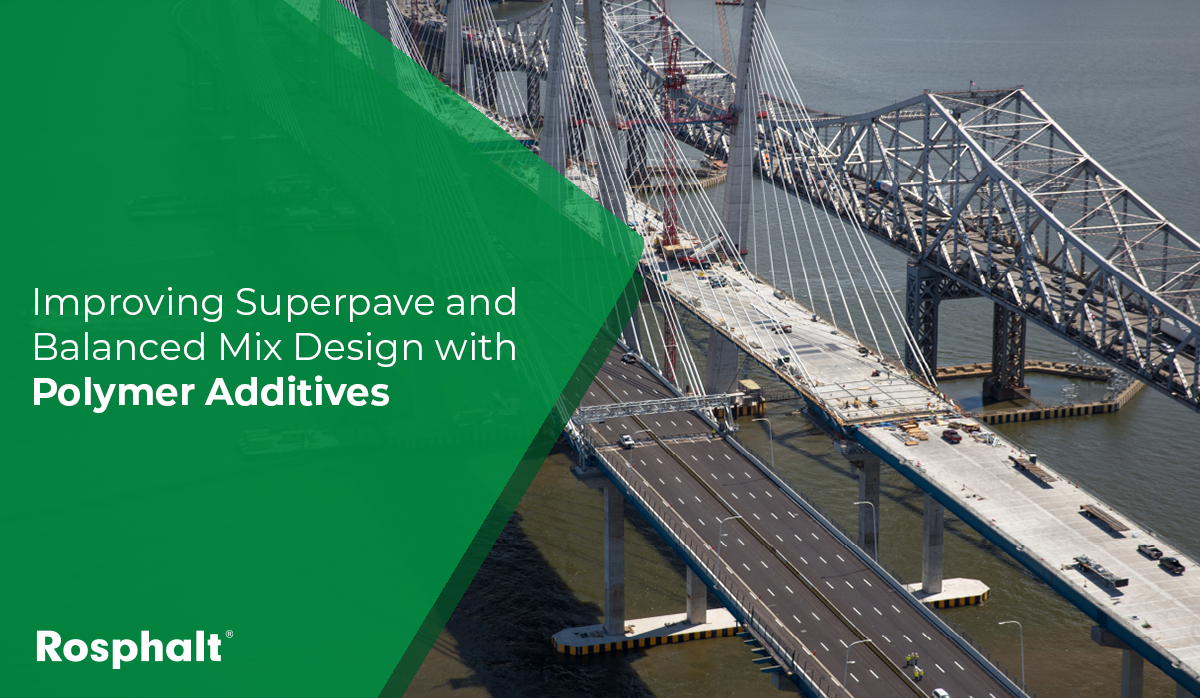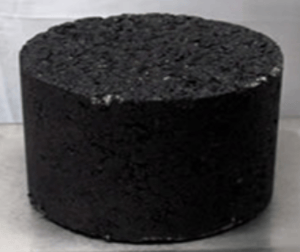Often, preparing an asphalt mixture is compared to baking a cake. A contractor needs to make sure...
Improving Superpave and Balanced Mix Design with Polymer Additives

Polymer additives are frequently incorporated into asphalt mix designs to improve specific performance characteristics, like the pavement's flexural fatigue (resistance to cracking) and rut and shove resistance. Production of polymer additives is in liquid or dry form, and their means and methods of addition into an asphalt mix differ.
Why Add Polymers to Asphalt Mix Design? Main Benefits
Liquid polymers are added directly into the liquid binders. These liquid polymers will "bump up' the Performance Grade (PG) of a neat binder, resulting in a modified liquid binder that performs better than the initial neat binder.
Dry powder polymers, such as Rosphalt, are added into individual asphalt batches at the asphalt production facilities. A Rosphalt-modified asphalt mix will enhance the standard performance of unmodified asphalt pavements and ensure the following asphalt overlay properties:
- Flexural fatigue resistance
- Moisture impermeability
- Rut and shove resistance
- Low-temperature cracking resistance
- High coefficient of dynamic friction

Figure 1. Typical Asphalt Test Core
Tailored Mix Design: Improving on Superpave Asphalt Mixing
Superpave (Superior Performing Asphalt Pavements) is a mix design system developed in the United States in the 1990s to produce asphalt mixes that offer superior performance and durability. It emphasizes using performance-based tests and considers various factors to design asphalt mixes tailored to specific environmental and traffic conditions.
Superpave asphalt mix designs are tailored to a road's specific climate, traffic, and loading conditions. This customization of material properties helps improve the pavement's performance under varying circumstances, resulting in more durable asphalt pavements that can withstand the stresses of heavy traffic and weather-related challenges.
The mix design criteria for Superpave specify a range of criteria the mix must meet, including air void content, VMA, VFA, and other volumetric properties. These criteria are determined based on the expected traffic and environmental conditions. The National Center for Asphalt Technology provides a Balanced Mix Design Resource Guide.
Additional information is available through the Federal Highway Administration (FHWA) Expert Task Group (ETG) Balanced Mix Design Task Force in 2015.ᶦ "Asphalt mix designs using performance tests on appropriately conditioned specimens that address multiple modes of distress taking into consideration mix aging, traffic, climate and location within the pavement structure" per AASHTO PP 105-20.
In summary, volumetric properties are essential in asphalt mix design because they determine the asphalt mix's structural integrity, durability, and overall performance, ultimately impacting the longevity and cost-effectiveness of the pavement.
A balanced mix design begins with a set criterion, starting with a volumetric design and then building upon that design by adding a polymer additive. Adding a dry polymer, like Rosphalt, will bump up the Performance Grade of the neat binder and impart the performance properties required to meet the service conditions of the roadway or bridge.
Contact your Chase Corporation representative for assistance with the Bridge & Highway product solutions for your projects. 
Notes:
National Center for Asphalt Technology, "Balanced Mix Design Resource Guide





